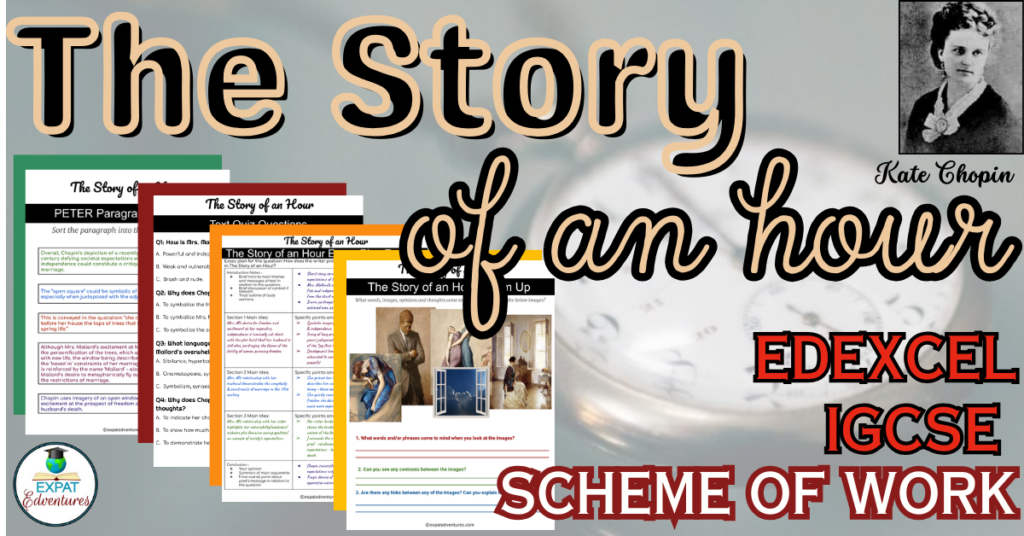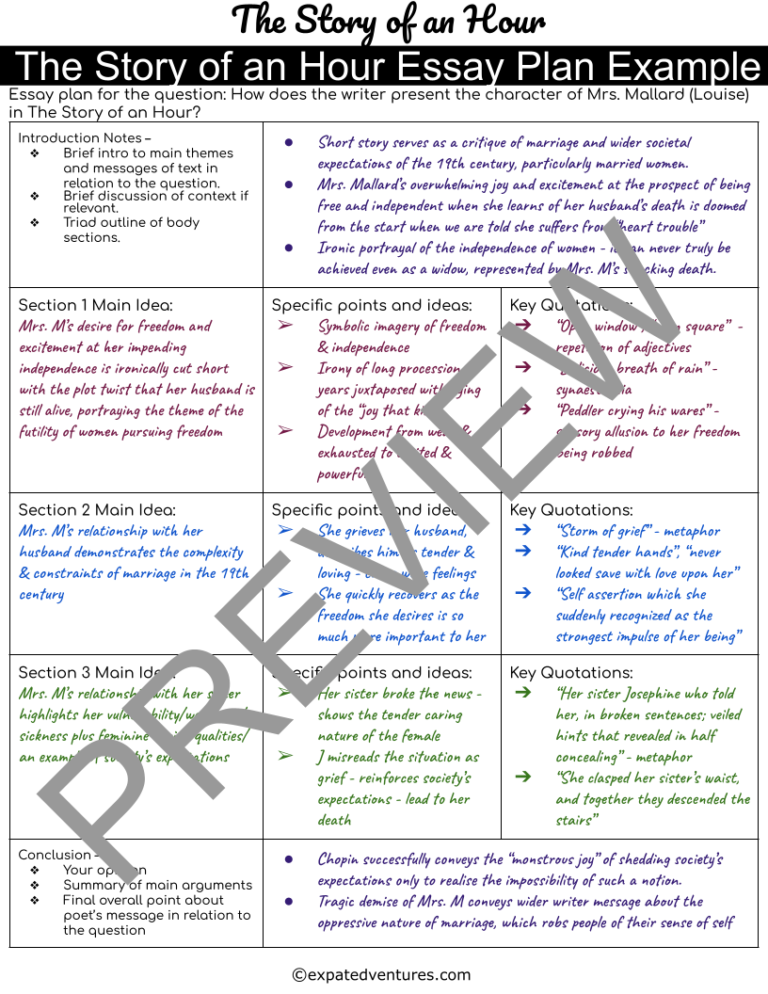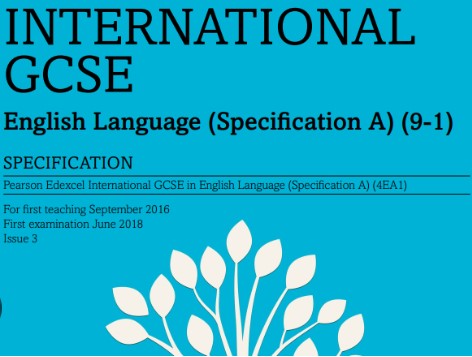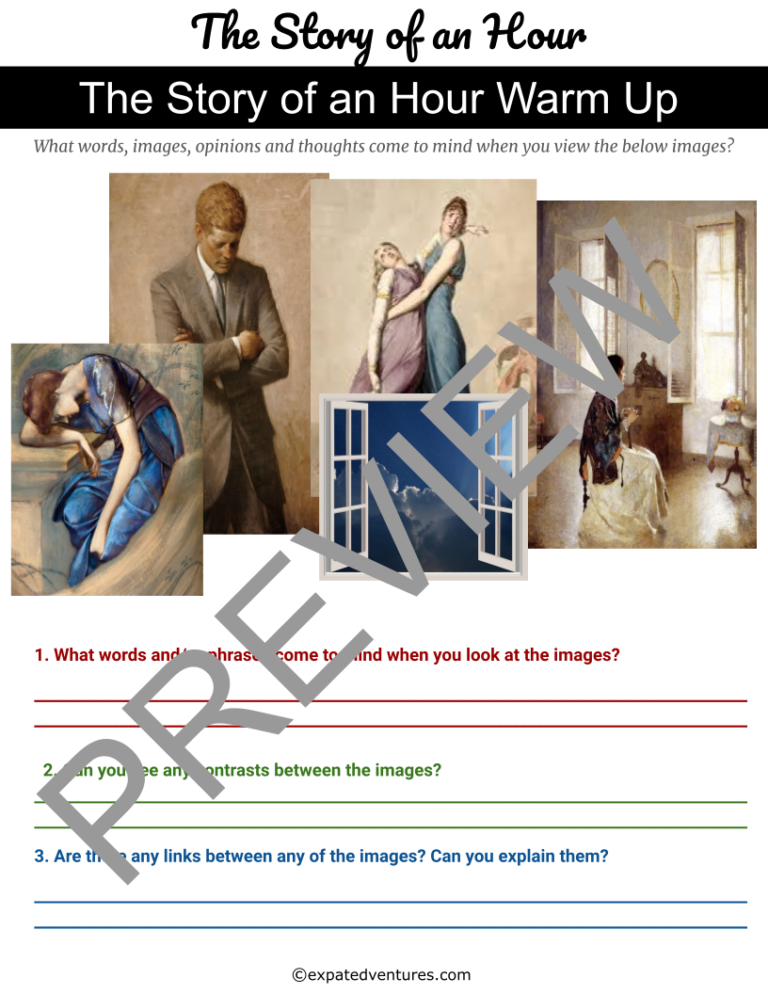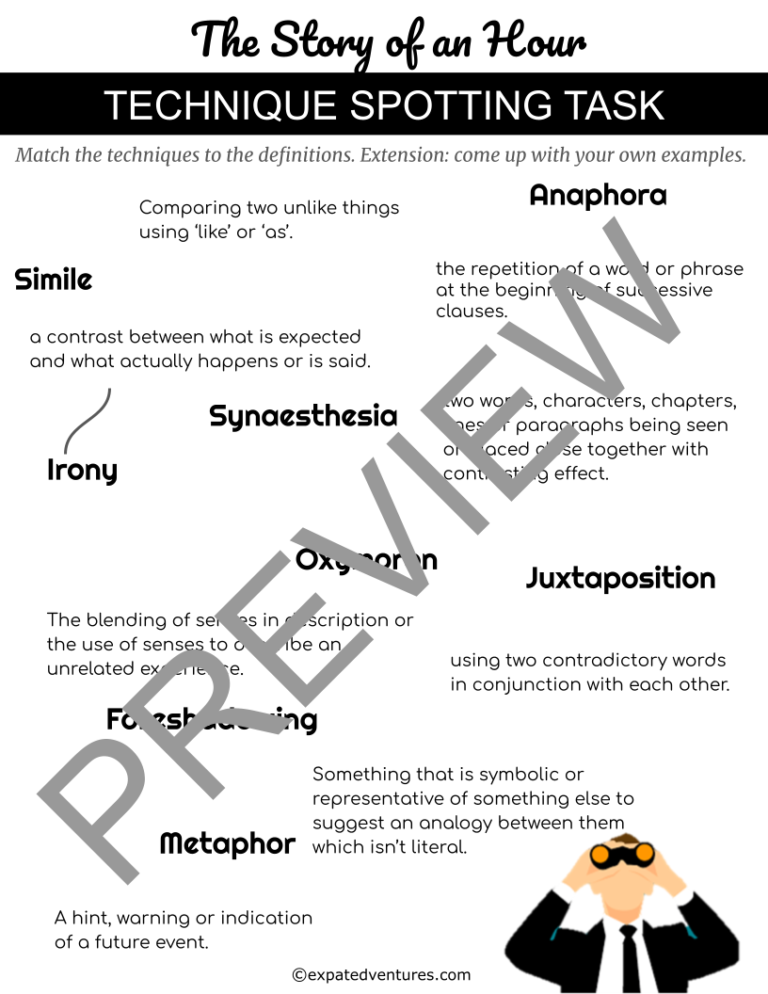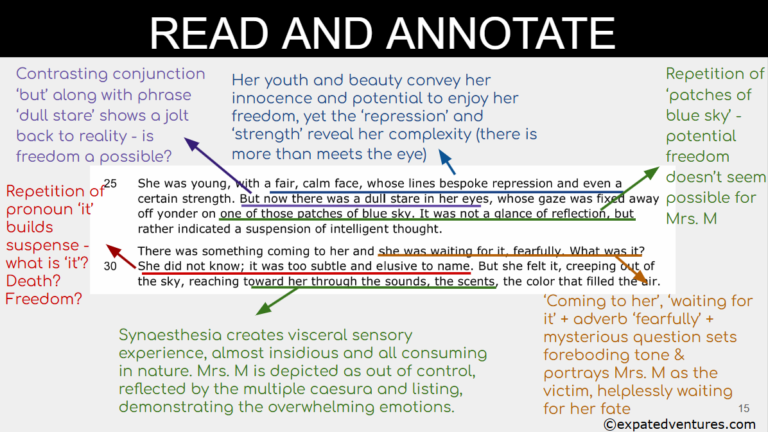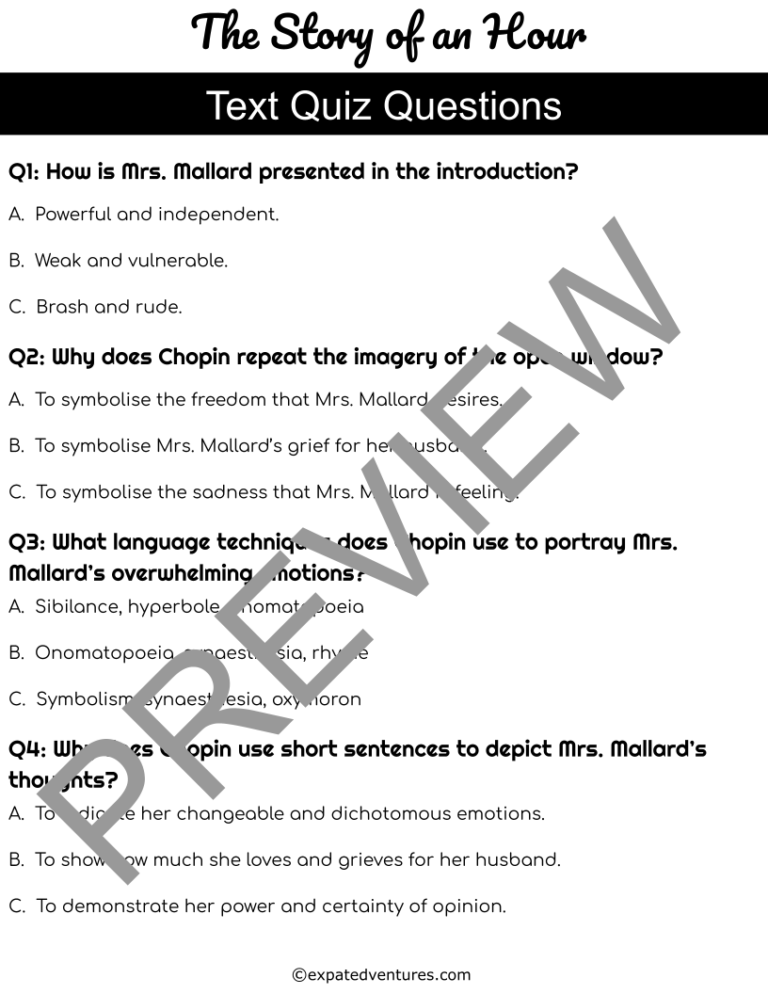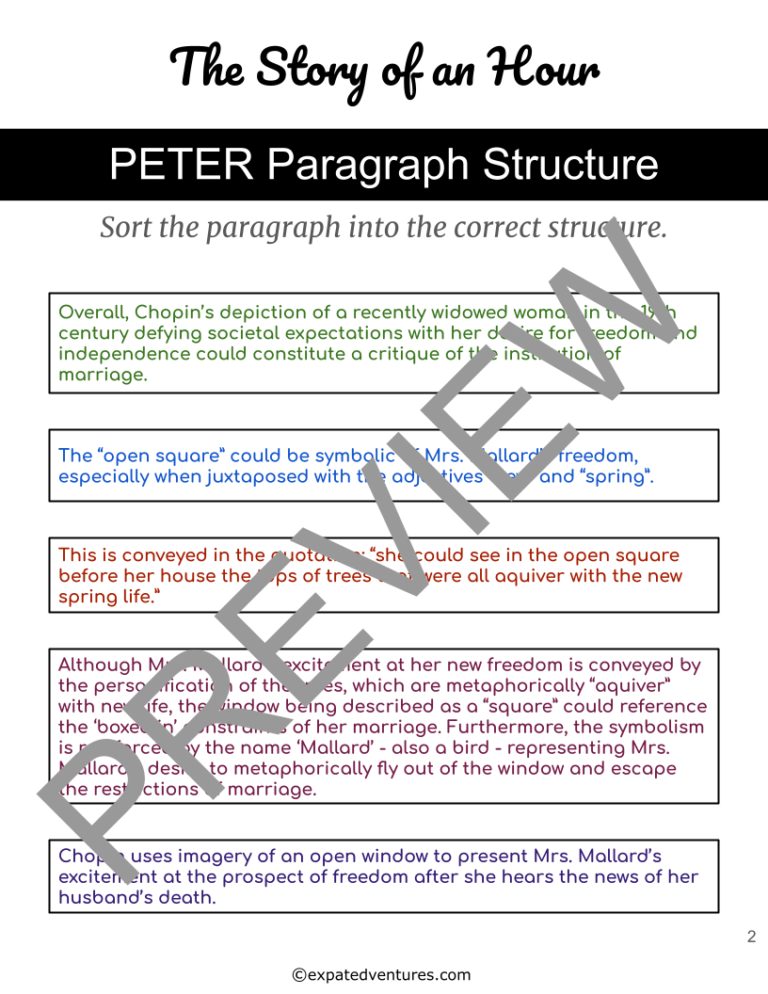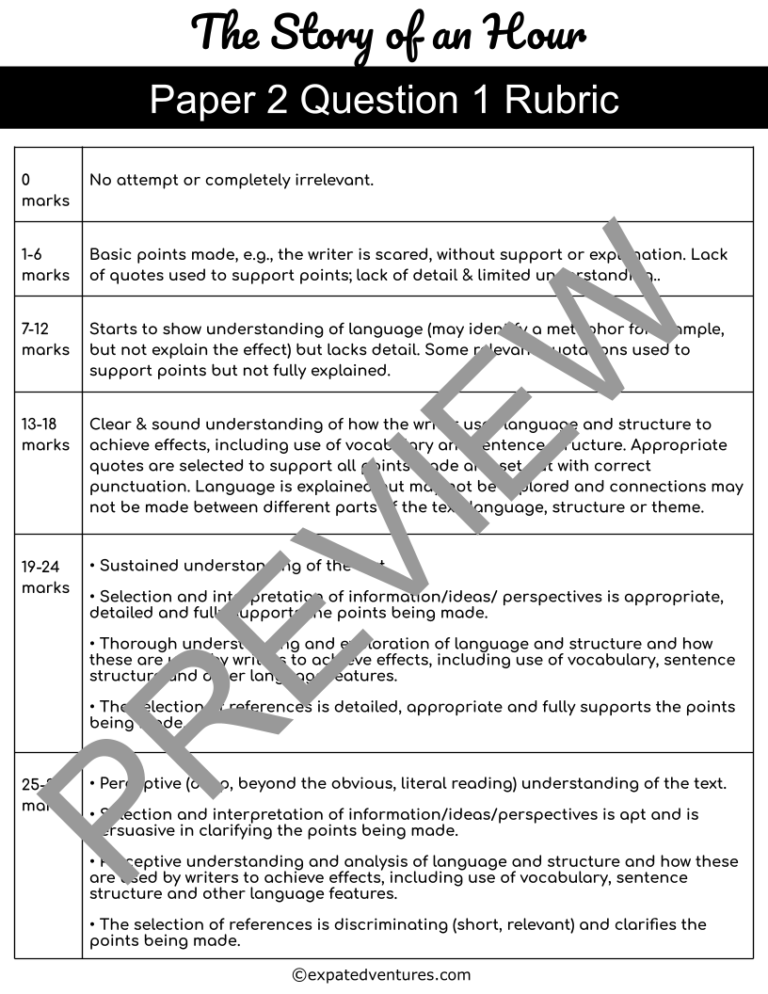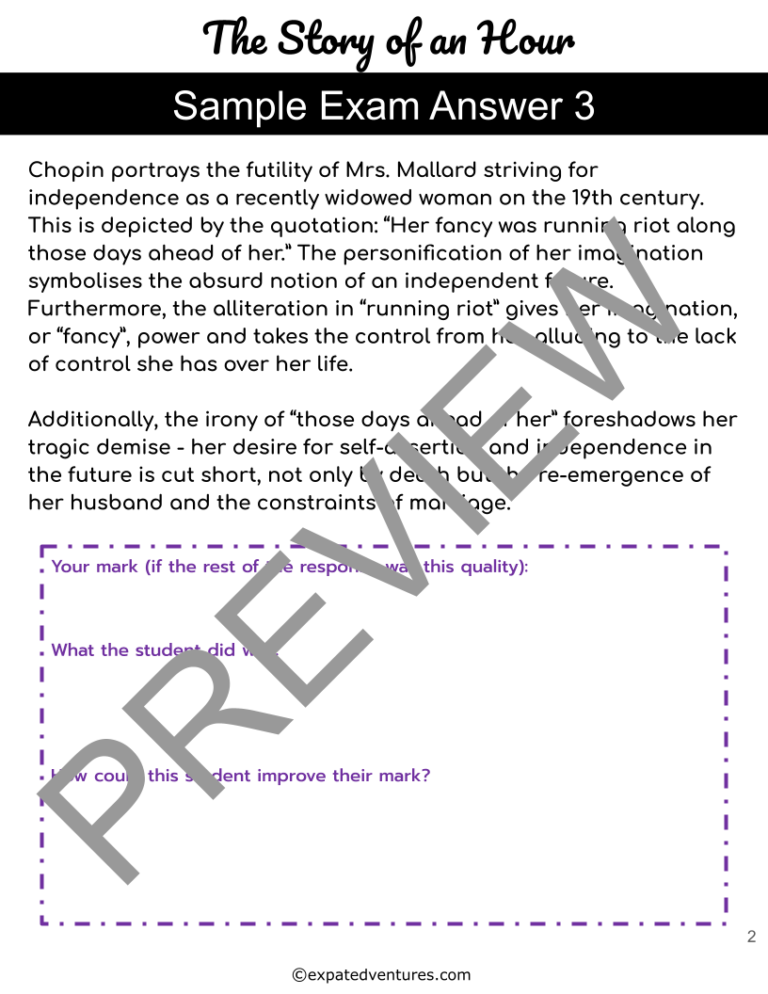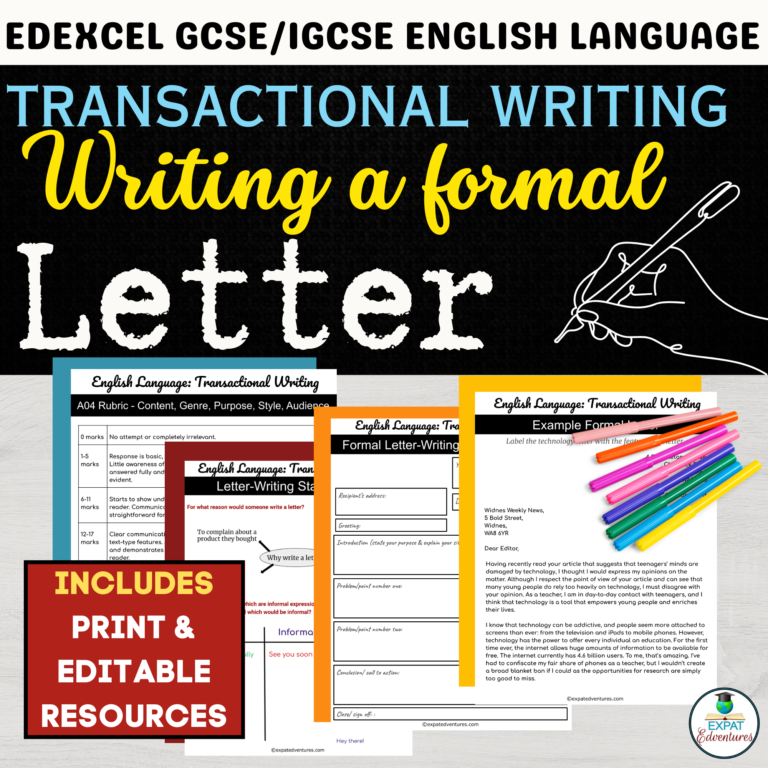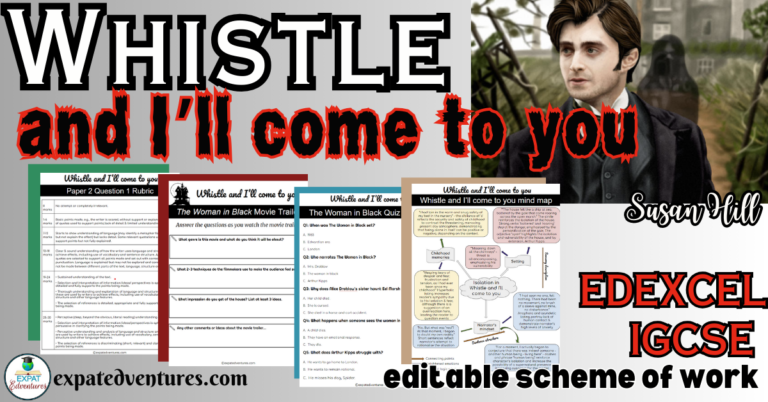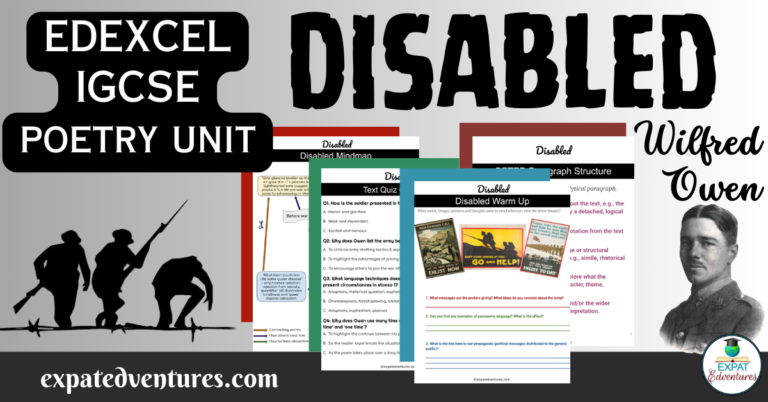The text ‘The Story of an Hour by Kate Chopin is currently taught on the Edexcel International GCSE English Language Paper 2 curriculum. It is one of the 10 prose and poetry anthology texts which students answer on for Question 1. This complete The Story of an Hour IGCSE resources pack comes packaged in a cohesive scheme of work. It includes line-by-line annotations, quiz questions with an answer key, a mind mapping activity, rubric and example answers for students to mark.
The Story of an Hour Summary
‘The Story of an Hour’ by Kate Chopin tells the story of a 19th century female character, Louise Mallard. At the start, she receives news of her husband’s death. Immediately, she is overwhelmed by a flurry of emotions, from grief to joy. Thematically, the narrative explores expectations of women in the 19th century, particularly married women. Mrs. Mallard struggles between her inner emotions and external expectations, particularly at the prospect of freedom from the constraints of marriage.
However, her musings about an independent future are abruptly halted by her sudden death. Ironically, her death is caused by the sheer devastation and disappointment of seeing her husband, who is very much alive, rather than joy, as those around her believe. Symbolically, seeing her husband again thrusts her into a life of metaphorical shackles, a depressing existence as far as she is concerned. At the beginning, we are told that she suffers from heart trouble, foreshadowing her untimely demise and hinting to the reader that such a life of freedom and independence is highly unlikely for a female of the time period.
Kate Chopin uses vivid imagery to convey Mrs. Mallard’s inner turmoil; but how can we support students to capture that in their exam essays? How can we break it down to consider not only the literal description of the reactions of a woman at the news of her husband’s death, but how the depiction of her emotions reflects the wider portrayal of marriage and gender in the 19th century?
The Story of an Hour IGCSE Scheme of Work
I’ve created a scheme of work for busy teachers to take your students step-by-step through the text. It contains everything from an engaging, thought-provoking starter, to quiz questions about the passage. There are also detailed annotations of the text and exam practice (rubric, mind mapping activity and example answer) for the 30-mark question on Language Paper 2. This The Story of an Hour IGCSE resource contains editable Google slides, quizzes with answer keys, sample exam questions, a mind mapping activity and close textual annotations of the whole GCSE text. All activities are ready to download and print in PDF form or there are links for you to personalise them if you wish.
Edexcel IGCSE English Language Exam Paper 2
The 1 hour 30 minutes Edexcel IGCSE English Language Paper 2 exam is split into Section A and Section B. Section A is the reading assessment and candidates are presented with one of the 10 prose and poetry anthology texts. The prose texts are between 1.5 and 3.5 pages long and the texts are approximately 1 page. They have 1 30-mark question to answer, which is usually based on a broad theme from the selected text, such as death, strong emotions, sympathy or conflict. Furthermore, candidates are provided with 3 bullet points which give guidance as to what to include in the response.
Section B is an imaginative writing assessment. Candidates choose between three options, which are normally loosely based on the Section A text.
- Question 2 tends to be a personal question. For example, write about a time you overcame a challenge. The response can be real or imagined.
- Question 3 tends to give the title of a story, and candidates are required to write the story.
- Question 4 usually provides a set of 2-3 images which students may use as a stimulus to write a story.
The Story of an Hour Resources and Analysis
To introduce the text ‘The Story of an Hour’, I ask students to discuss images related to the text. Then, they discuss for 5 minutes or so in pairs or small groups before we do class feedback. These The Story of an Hour IGCSE resources contain images with ideas to discuss with students. As the text contains instances of symbolism, this is an effective way for students to explore those less tangible ideas. For an extension or discussion activity, I ask students to explore comparisons and contrasts between the images. This helps them to see connections between ideas in the passage.
The Story of an Hour Language and Structure Techniques
Before diving into the text, I quickly review language and structure techniques in the text so that they are fresh in students’ minds. Students match the definition and technique, which they can either copy, cut and paste or simply number. As an extension, students can write their own examples of the techniques. This is also a useful revision tool for any GCSE English exam. When they know the language techniques implicitly, they naturally refer to them in their analysis and raise their marks.
The Story of an Hour line-by-line analysis
Before close textual analysis, I often ask students to do an initial reading for the tone and literal meaning. It is a fairly straightforward text for students to understand on a surface level – a description of a sickly and recently widowed female trying to work through her emotions. The challenge comes in unpacking how Chopin uses Mrs. Mallard’s plight to explore ideas of gender and marriage at the time. As well as that, Chopin implores the reader to question whether independence is ever truly possible for women in the 19th century. Close textual annotations are a way to support students to unpack these deeper meanings.
When it comes to closely analysing the lines of the text, there are a few ways of approaching the activity. You can read and annotate together with students completing the annotations in real time. Alternatively, you can split students into groups and ask each group to focus on a certain number of lines before feeding back to the class. Or you could read and discuss, then ask students to complete the annotations for homework.
There are many ways of approaching close textual analysis; I find that varying the method for different texts keeps students interested through the unit. This ‘The Story of an Hour’ IGCSE resources pack contains detailed line-by-line annotations of the whole text.
Edexcel The Story of an Hour IGCSE Quiz with Answer Key
After analysing the text, I do a quick AFL quiz with students to assess their understanding of the language and structure of the text. Then, it’s a good idea to introduce exam practice questions. Editable quiz questions for a straightforward low stakes multiple choice quiz with answers are available on the slides and in PDF form with these The Story of an Hour IGCSE resources. Depending on your time and the nature of your class, you can do this as a whole class activity on the interactive whiteboard or hand out for students to do in pairs or individually.
The Story of an Hour Edexcel Practice Past Paper Exam Questions
Question 1 on the IGCSE English Language Paper 2 exam is a 30-mark question on one of the 10 anthology prose and poetry texts. You can find them in Part 2 of the anthology. Although it is one question, it is fairly high stakes as students don’t have anywhere to hide; they must perform on this question. I reinforce to them that they must know all 10 of the texts very well to write a detailed essay on just one of them in the exam.
There are some steps to take before asking students to write a response. Firstly, it may be useful to take students through the rubric so that they familiarise themselves with how the response is awarded. Then, you can take students through the example PETER paragraph (point, evidence, technique, explain, refer). If you wish, you can ask them to order the parts of the example paragraph, so they grapple with the concept of a cohesive paragraph. This way, there are scaffolds in place to support students to produce high quality responses. Also, you can demonstrate how the paragraph hits the mark scheme pointers, such as exploring techniques and use of vocabulary for effect. It also directly links to the question, which is something examiners look for.
In this The Story of an Hour GCSE scheme of work, there is a rubric, paragraph structure and sorting activity so that students can see how to write a cohesive analytical paragraph. This is a useful way to ease hesitant students into writing a full analysis of the text.
The Story of an Hour Planning a GCSE essay
Once students are comfortable with composing an evaluative paragraph, it’s a good time to move on to planning out a cohesive essay. In the resource pack, there is an essay planning scaffold, including sections for students to write notes and quotes on various themes and techniques in The Story of an Hour. In addition, there is an example completed plan to show to students as a demonstration. The essay plan provides scaffolding for students’ ideas and helps to prevent repetitive or waffling responses.
Edexcel IGCSE The Story of an Hour Essay Examples
Included in these The Story of an Hour IGCSE resources, I have provided three example exam responses of varying quality. For each response, ask students to put themselves in the examiner’s shoes and mark the answer using the rubric. Then, students can explain what the answer did well and areas to improve. As an extension, students can develop the weakest example answer. Hold a class discussion about the answers before revealing the examiner’s marks (included in the notes on the slides).
Essentially, to be awarded full marks, there should be evidence of perceptive analysis. I explain to students that the answer goes beyond ‘obvious’ points and draws out the writer’s range of feelings and relation to the reader. Consider whether the writer changes their perspective and how language and structure connect for effect. For example, a long syndetic list can also contain strong, emotive verbs. Quotations must be relevant to the points made for a student to be placed in the top band of the mark scheme. Also, multiple quotations should be used through the response. Finally, the response must ‘zoom in and out’ – it should contain evaluative analysis and discussion of the writer’s wider message.
Edexcel GCSE English Language Imaginative Writing Practice
There are also a couple of writing prompts included in these The Story of an Hour IGCSE resources. Time-permitting, this is an excellent text to base a creative or transactional writing piece around as it is so steeped in vivid imagery. You could have the students write an article, story or letter based on the text. This can help develop skills required for Section B of Paper 1 (Transactional Writing) and Section B of Paper 2 (Imaginative Writing), whilst increasing their engagement with the text The Story of an Hour.
Edexcel English Language GCSE Revision
To sum up, some of the best techniques for teaching the 10 prose and poetry texts include:
- Hook students with an intriguing starter activity
- Use alternative methods to closely analyse and annotate the text
- Quiz students for quick AFL strategy to assess whether they are engaging with the text
- Practise past paper questions
- Study model answers, including examples of typical mistakes students make in the exam responses
- Offer an optional creative activity as homework or an extension to challenge students’ perceptions of the text
Good luck teaching The Story of an Hour. Despite the multiple examples of intangible symbolism, I find students’ responses to the twist at the end interesting to dissect. Comment below if you can add any useful teaching and learning techniques for this text.
If you enjoyed this article about teaching ‘The Story of an Hour’, you might also find value in my Edexcel IGCSE Paper 2 guides and resources for ‘Out, out’‘ and ‘The Bright Lights of Sarajevo’. There are also Edexcel IGCSE English Language Paper 1 guides and schemes of work for many of the set texts, including Chinese Cinderella and Young and Dyslexic: You’ve got it going on. Follow my store for more as resources are frequently added.

